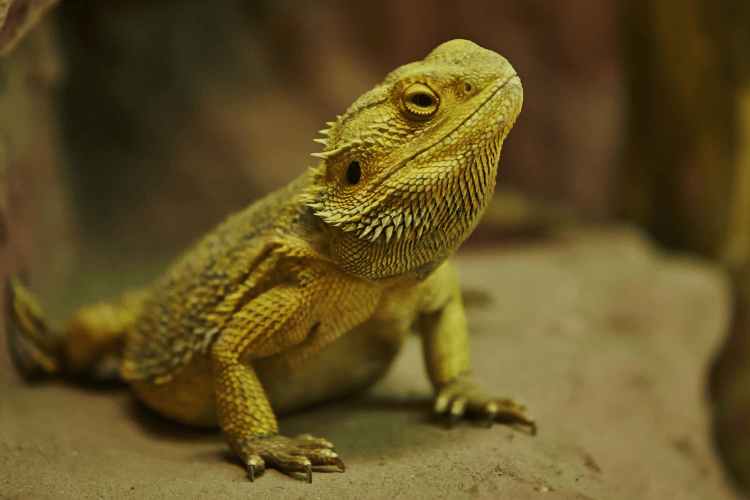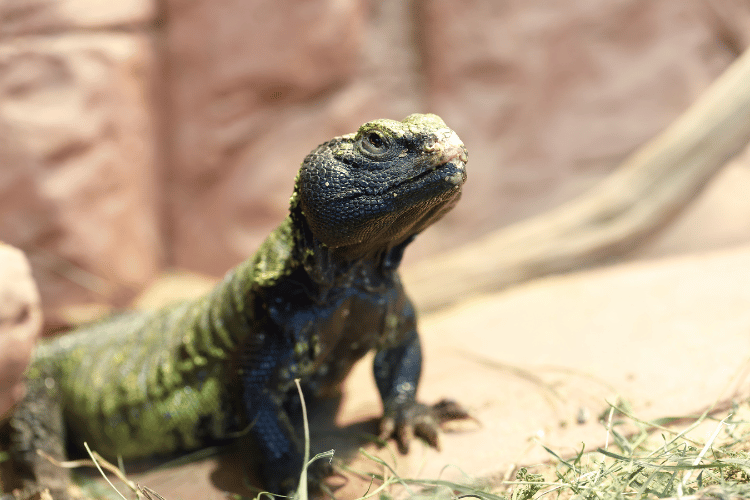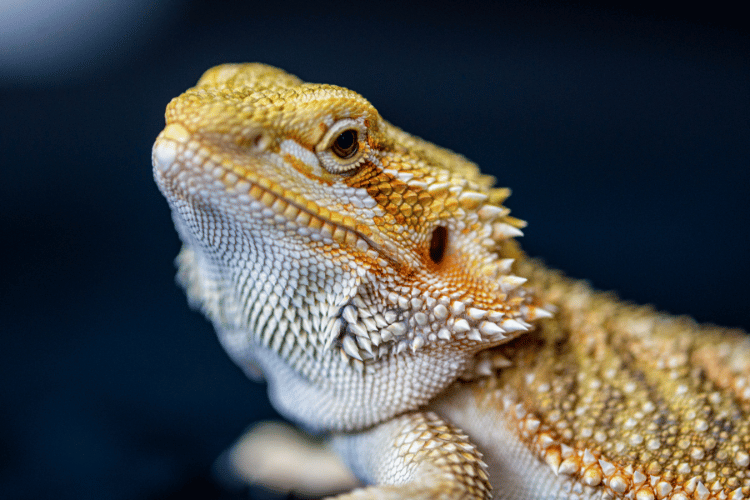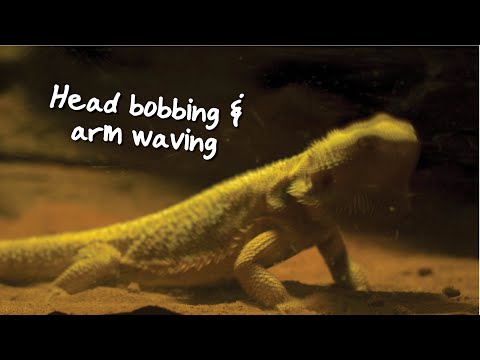Are you looking for a pet lizard to bring life to your empty tank?
In this Uromastyx vs. bearded dragons showdown, we’ll explore their similarities and differences in size, appearance, personality, and other factors.
Plus, we’ll discuss their care requirements to help you choose the reptile pet that fits your lifestyle and needs.
Uromastyx vs. Bearded Dragons: Overview

The bearded dragon is a species of lizard of the genus Pogona. Native to Australia, there are currently eight subspecies of beardies and at least 20 bearded dragon morphs. Morphs are mutations that affect their body shape, size, color, and patterns.
Meanwhile, Uromastyx is a genus of lizards that hail from the arid regions of Africa and the Middle East.
The name translates to whipping tail in Ancient Greek, inspired by the spiky tail they use to lash out at enemies. In the US, you can get your hands on six species of spiny-tailed lizards, either from pet stores or private breeders.
Despite being distant cousins in the lizard family, they share several similarities.
Both are agamid lizards but come from different genera. As agamids, uros and beardies are burrowers, rock-dwellers, and sun-lovers. Their powerful legs lift them off the ground as they move.
These adorable lizard pets are diurnal, which means they spend the day out and about and catch their Zs at night.
1. Appearance
Uromastyx species share similar physical traits but come in a range of colors and patterns. All have round heads, puffy cheeks, and well-armored tails.
Bearded dragons, on the other hand, do live up to their names. These tiny dragons have a fringe of blunt spikes underneath their chins and along both sides of their scaly bodies.
2. Size
Besides colors and markings, you can also tell different Uromastyx species apart by their size.
The Mali and Hardwick uros can be as short as 10 inches, while the Egyptian spiny-tailed lizard can stretch over 3 feet.
Bearded dragons reach their adult size at 12-18 months. Regular beardies usually hit the 12–24 inches range.
Some morphs, like the Goliaths and German giants, can grow around 26–28 inches. The smallest beardies are the Rankin’s dragons, maxing out at 12 inches.
3. Temperament
Uromastyx and bearded dragons are solitary animals, and the males can get territorial. They’re not fans of cage mates unless it’s mating season.
You can keep a breeding pair in a huge enclosure, but throwing two or more males together is just asking for trouble.
But how are these lizards towards pet owners?
Baby bearded dragons are quite nippy, so watch out when handling them. Train them early, and they’ll warm up to you fast. Once you’ve won them over, they’ll crack you up with their antics!
Sure, they’re open to a quick snuggle, but get ready for some head-bobbing if you happen to annoy them.
Uros aren’t exactly the cuddlebugs, but they can be such goofs. Taming them takes more work as they’re a bit shy and prefer to keep their distance.
If you’re a new pet owner, consider an ornate Uromastyx! This gorgeous bluish-green lizard isn’t skittish and adapts well to life in captivity.
4. Lifespan
Given proper care, bearded dragon can stick around for 10–15 years. However, Uromastyx can outlast them with an average lifespan of 10–20 years.
But hey, did you know that the verified longevity record for a Uromastyx is 46 years? That honor belongs to a Moroccan spiny-tailed lizard.

5. Price
You can snag a regular Uromastyx for $80–$250 and rarer ones for $300 and up.
Beardies might be cheaper at $60–$120, but prepare to splurge on those deluxe morphs. For instance, the paradox dragons can easily fetch $2,000 in the exotic pet trade.
Uromastyx vs. Bearded Dragons: Which Is Easier to Care For?
Let’s see which reptile is easier to handle and care for:
1. Diet
Uromastyx are omnivores but thrive with a plant-heavy diet. Protein overload can lead to kidney disease and even death.
Fill their plate with seeds and greens, and treat them to some flowers and fruits occasionally. All that fiber equals solid poop, making spot cleaning a breeze.
Plus, the moisture in the veggies offer them all the hydration they need. They can go several days without a drink!
You can feed the young ones crickets or worms from time to time, but honestly, they can live without them.
Meanwhile, baby dragons and juvies prefer live insects over plant materials. However, adult diets should lean towards more veggies than animal protein.
Feeding your dragon won’t be an issue if you have your own feeder bug colony. The only hitch is that bearded dragon poop stinks!
They’ll drop their business anywhere and get it all over themselves. Cleaning after your dragon can be a chore!
Lastly, don’t forget to give both species access to a water dish.
2. Enclosure
Adult Euromastyx needs a tank size of at least 40 gallons, with more floor space than vertical height. Decorate with slate rocks, branches, and fake plants to keep them interested.
Bearded dragons are little bundles of energy. They need at least a 60–gallon tank, with plenty of hiding spots and materials to climb and perch on.
Of course, larger enclosures are better for everyone!
3. Heat and Lighting

Uromastyx are desert animals that need high basking temperatures. Bearded dragons also need ample UVB light to make vitamin D3 and avoid metabolic bone disease.
A roomy enclosure with a temperature gradient is a must-have. It should include a toasty basking spot at one end and a chilling zone at the other.
Both species thermoregulate; they rely on a heat source to maintain their body temperature. In the wild, they do this by sunbathing and soaking up heat from a rock. To cool off, they retreat to a shady area during the hottest hours of the day.
4. Humidity
Both reptiles are native to hot, dry places.
Keep their enclosure at around 30–50% humidity to give them the perfect living conditions. Too much moisture can lead to early shedding and respiratory infections.
Wrapping Up
Well, it’s a real toss-up in this Uromastyx vs. bearded dragons face-off. Whichever you choose, these beautiful lizards will make good pet reptiles.
It doesn’t take a lot to keep them happy and satisfied. Plus, you can enjoy their companionship for many years with proper care.
The real winner is the reptile enthusiast who welcomes these incredible creatures into their heart and home.




